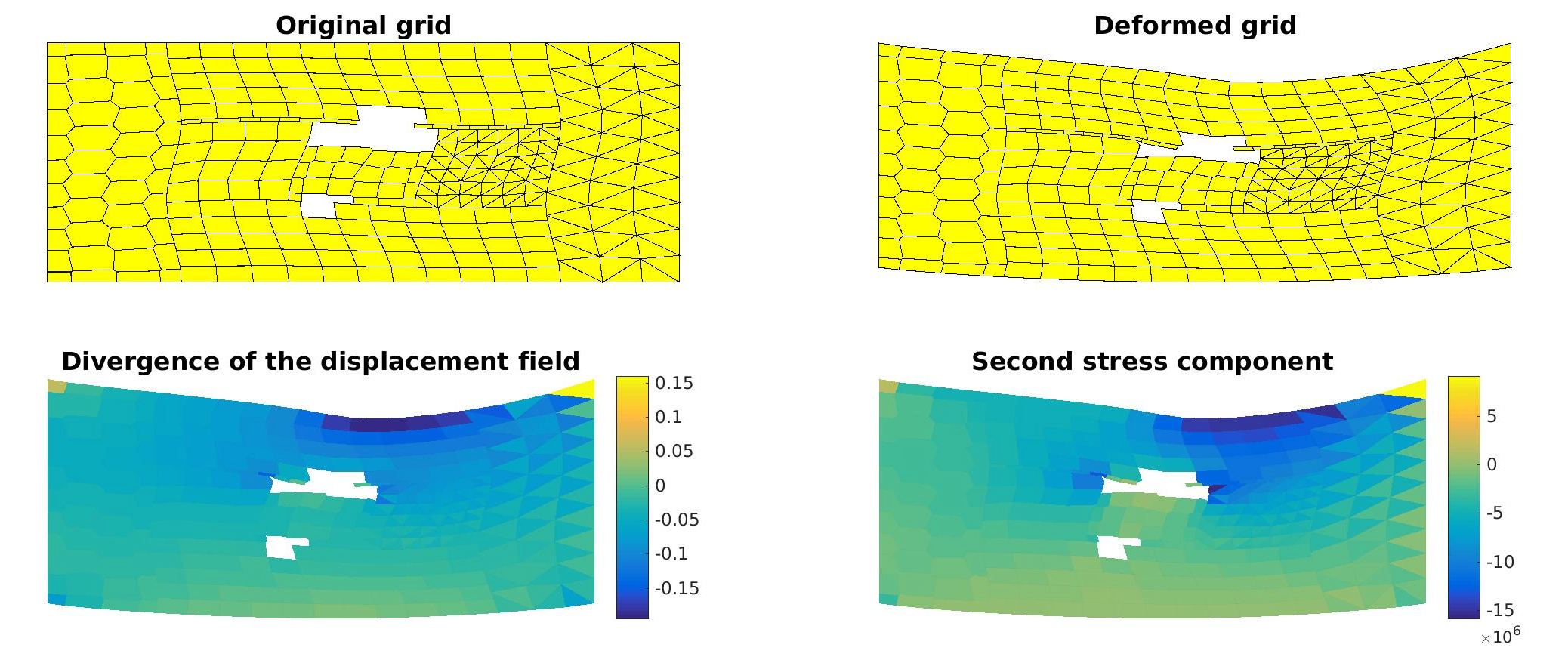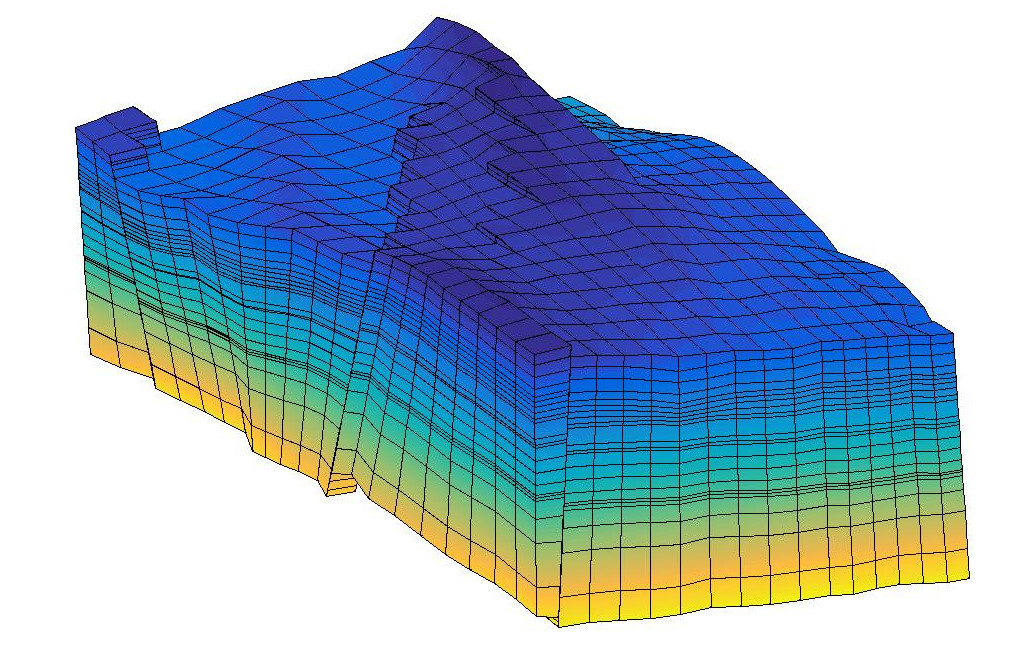|
Virtual Element Methods for Geomechanics
This module offers the functionality to set up a solver for linear elasticity problems on irregular grid, using the virtual element method.
The virtual element method can be formulated as a finite element methods where the basis functions are neither given or computed. The method has the flexibility to handle irregular grid at the cost of an increased error in the energy norm, compared with classical finite element. We follow the implementation from Gain et al [1] and Beirao da Veiga [2]. In the examples, we consider several types of irregular grids which covers the main features of geological model such as irregular cell shapes, hanging nodes, high aspect ratios. The boundary conditions can either be set equal to a given force or as Dirichlet boundary conditions. The format supports gliding conditions in Cartesian directions. The illustrations below are compaction tests.
References
|
||||


